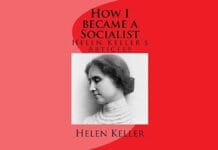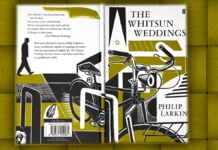Comedy is a literary genre and form of entertainment that aims to amuse and entertain the audience, often through humour, wit, and satire. It encompasses many styles and forms, from light-hearted and playful to biting and critical.
Comedy dates back to Ancient Greece, originating from the literary definition: a medieval story or narrative involving an amusing character who triumphs over poor circumstances, creating comic effects. The tone here is light and satirical, and the story always ends well. On the one hand, it contrasts with tragedy, farce, burlesque, and other forms of humorous amusement.
The word comedy seems to be connected by derivation with the Greek verb meaning to revel, and comedy arose out of the revels associated with the rites of Dionysus, a god of vegetation. The origins of comedy are thus bound up with vegetation ritual. In his Poetics, Aristotle states that comedy originated in phallic songs and that, like tragedy, began in improvisation. Though tragedy evolved in stages that can be traced, the progress of comedy passed unnoticed because it was not taken seriously. According to their natural bent, poets wrote one or the other when tragedy and comedy arose. Those of the graver sort, who might previously have been inclined to celebrate the actions of the great in epic poetry, turned to tragedy; poets of a lower type, who had set forth the doings of the lowly in invectives, turned to comedy. Comedy is distinguished from tragedy through persons and manners in that it imitates humbler persons and leaner fortunes. It is clear that comedy is not just subject to any vices but needs jokes, witticisms and the ridiculous, for the ridiculous is a kind of fault, but this ugliness is without pain, harm or misfortune.
All discussions on the basic nature of comedy have stemmed from Aristotle’s definition of comedy as “Imitation of bad characters, bad not with respect to every sort of vice, but to ridicule only, as being a species of turpitude or deformity…… This is neither painful nor destructive”. Aristotle said that comedy deals with the ridiculous, and Plato, in the Philebus, defined the ridiculous as a failure of self-knowledge; such a failure is there shown to be laughable in private individuals (the personages of comedy) but terrible in persons who wield power (the personages of tragedy). Aristotle taught that comedy was generally positive for society since it brings forth happiness, which, for Aristotle, was the ideal state and the final goal of any activity. For Aristotle, a comedy did not need to involve sexual humour. A comedy is about the fortunate occurrence of a sympathetic character.
Aristotle divides comedy into three categories or subgenres: farce, romantic comedy, and satire. On the other hand, Plato taught that comedy is the destruction of the self. He believed that it produces an emotion that overrides rational self-control and learning. In The Republic, he says that the guardians of the state should avoid laughter, “for ordinarily when one abandons himself to violent laughter, his condition provokes a violent reaction.” Plato says comedy should be tightly controlled if one wants to achieve the ideal state. In Poetics, Aristotle defined comedy as one of the four original genres of literature. The other three genres are tragedy, epic poetry, and lyric poetry.
In general, Aristotle defines literature as a mimesis or imitation of life. Comedy is the third form of literature, most divorced from a true mimesis. Tragedy is the truest mimesis, followed by epic poetry, comedy, and lyric poetry. According to Aristotle, the comedy genre is defined by a specific pattern. Comedies begin with low or base characters seeking insignificant aims and end with some accomplishment of the aims, which either lightens the initial baseness or reveals the insignificance of the aims. In comedy, failure is often mirrored in a character’s efforts to live up to an ideal of self that may be perfectly worthy but the wrong ideal for that particular character. The comic artist’s purpose is to hold a mirror up to society to reflect its follies and vices in the hope that they will, as a result, be mended. A comedy, thus, is a story that illustrates the idiosyncrasies of ordinary people and has a happy ending where the protagonist achieves his goal at the end. William Shakespeare’s A Midsummer Night’s Dream is an example of a romantic comedy. In this play, the characters experience comical situations of confused love, but in the end, they are reunited with feelings for their true loves. George Bernard Shaw’s Pygmalion is an example of a comedy of manners. In this play, a gentleman of high society attempts to refine a lower-class woman through lessons on how to act appropriately.
In its Elizabethan usage, comedy had a very different meaning from modern comedy. A Shakespearean comedy has a happy ending, usually involving marriages between unmarried characters and a tone and style that is more light-hearted than Shakespeare’s other plays. A successful comedy cannot only make the audience happy and amused but can also make the audience understand severe social or individual problems. A comedy can be categorised depending on its characteristics. The plots of Shakespeare’s last plays (Pericles, Cymbeline, The Winter’s Tale, The Tempest) contain a potential tragedy but one that is resolved by non-tragic means. They include an element of the romance of the kind purveyed from Greek New Comedy through the plays of the ancient Roman comic dramatists Plautus and Terence.
William Shakespeare’s A Midsummer Night’s Dream is an example of a romantic comedy. In this play, the characters experience comical situations of confused love, but in the end, they are reunited with feelings for their true loves. George Bernard Shaw’s Pygmalion is an example of a comedy of manners. In this play, a gentleman of high society attempts to refine a lower-class woman through lessons on how to act appropriately. Wit in dialogue pervades the plays of Ben Jonson, Congreve, Etherege, Sheridan, Shaw, Wilde and many more, not to mention Shakespeare’s wit as a highly sophisticated expression in comedy. It marks the triumph of intellect and often lends an air of artificiality to comic drama. But humour is a question of a deeper human attitude conditioned by an earnestness of feeling. The simultaneous co-existence of humour and wit lends grace to comedy.
The most common feature of comedy as a work of art, which ends happily and leaves behind a pleasurable sensation, is the element of love. Comedy strikes a sense of joy, a feeling of the light of life sponsored by love. In his essay On Comedy, Meredith has upheld love as the staple of literary comedy. The triumph of love as the central thing of comedy is not only evident in Shakespeare’s major plays like As You Like It or Twelfth Night but even in radically different plays like Jonson’s Every Man in His Humour, Goldsmith’s She Stoops to Conquer, Congreve’s The Way of The World or Shaw’s Arms and The Man.
If love is the staple of comedy, laughter is its spirit. Laughter is the most necessary ingredient in comic art. Laughter may arise from
- physical deformity and incongruity, mental deformity or obsession.
- amusing situations, ridiculous or awkward manners.
- diverting dialogue or ludicrous expression.
- satire or gross farcical caricatures.
An instance from Richard Sheridan’s The School for Scandal can be cited here; the scene is the verbal duel between Sir Peter and his fashion-minded extravagant wife, Lady Teazle.
Lady Teazle: What though I was educated in the country, I know very well the women of fashion in London are accountable to nobody after their marriage.
Sir Peter: Very well, madam – so a husband is to have no influence no authority?
Lady Teazle: Authority? No, to be sure! If you wanted authority over me, you should have adopted Me, not married me.
Another source of laughter in comedy is the use of satire. Satire differs from wit and humour, though it is also an intellectual exercise. It is an exposure of ills and evils intended to evoke laughter. It hits hard to ridicule the follies and vices in men and manners. Ben Jonson’s Every Man in His Humour is one of the best examples of delightful satire. This play caricatures the anger of thoughtless young fellows and the obsessive cares and anxieties of old fathers. Perhaps the most penetrating effect of satire is perceived as unmasking the hypocrisy, vanity, greed, and other distortions of individual and social morality. For instance, Goldsmith ridicules the stupid fondness of ignorant women for fashion through Mrs Hardcastle in She Stoops to Conquer. At the same time, Sheridan satirises male chauvinism through the character of Sir Anthony Absolute in The Rivals. Still, everywhere, the purpose is to provide delight and not to hurt or take revenge. It is the harmonious blending of all these factors of comedy that accounts for its spirit.
Characteristics
The primary purpose is to evoke laughter and amusement. It creates humour by using jokes, puns, exaggerations, and absurd situations.
Comedy typically features favourable resolutions where conflicts are resolved, and characters find happiness or satisfaction. Happy endings distinguish comedy from tragedy, which often ends in disaster or sorrow.
Comedy often reflects and critiques societal norms, behaviours, and politics through satire and irony. It exposes human follies and vices, prompting reflection and sometimes change.
Comedy frequently includes stock characters such as the clever servant, the foolish old man, the braggart soldier, and the young lovers. These characters often embody exaggerated traits for comedic effect.
Comedy maintains a playful, whimsical, or irreverent tone, even when addressing serious themes. It can range from gentle humour to sharp satire.
Elements
Wit and Wordplay
- Clever and inventive use of language, including puns, double entendres, and banter.
- Characters often engage in verbal sparring and clever dialogue.
Incongruity
- Humour arises from the juxtaposition of disparate elements, creating surprise and absurdity.
- Unexpected situations, behaviour, or language can generate a comedic effect.
Repetition
- Repeated actions, phrases, or situations can build humour through anticipation and familiarity.
- Running gags or catchphrases are standard techniques.
Exaggeration
- Amplifies traits, actions, or situations beyond realistic bounds to create humour.
- Can apply to characters, physical actions, or social situations.
Parody
- Imitates and mocks the style, conventions, or content of other works or genres.
- Highlights the absurdities and flaws of the original.
Types of Comedy
Farce
- Relies on exaggerated situations, physical humour, and improbable events.
- Characters are often placed in ridiculous predicaments, leading to humorous mishaps.
E.g., Noises Off by Michael Frayn.
Satire
- Uses humor, irony, and exaggeration to criticise and expose the flaws and corruption of individuals, institutions, or society.
- Often aims to provoke thought and inspire change.
E.g., Jonathan Swift’s A Modest Proposal.
Romantic Comedy
- Focuses on love and romantic relationships, typically with a light-hearted and humorous tone.
- Often involves misunderstandings, mistaken identities, and ultimately a happy ending.
E.g., Shakespeare’s Much Ado About Nothing.
Black Comedy
- Explores serious, taboo, or distressing subjects with humour.
- Uses irony and cynicism to highlight the absurdity and contradictions in life and human nature.
E.g., Martin McDonagh’s The Lieutenant of Inishmore.
Comedy of Manners
- Satirisess the manners and affectations of a social class, often focusing on the behaviour of the upper class.
- Emphasises witty dialogue and the clash between appearances and reality.
E.g., Oscar Wilde’s The Importance of Being Earnest.
Slapstick
- Relies on physical humour, including pratfalls, collisions, and exaggerated actions.
- Characters often endure physical pain or mishaps for comedic effect.
E.g., The works of Charlie Chaplin and Buster Keaton.
Comedy is a dynamic and multifaceted genre that spans many styles and forms, from light-hearted romantic comedies to biting social satires. By blending humour with serious themes, comedy offers both entertainment and reflection, challenging audiences to laugh at and think about the complexities of human behaviour and society. Its enduring appeal lies in its ability to adapt to changing cultural contexts while maintaining the fundamental aim of eliciting laughter and joy.






























